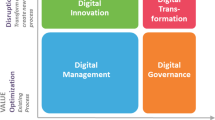Abstract
This article examines the intents and effects of China’s national policies to promote a synergistic approach to university–industry collaborative education. These policies set out to reduce the academia-industry disconnection for engineering education. Based on document analysis and interviews with various types of stakeholders, the study reveals that China has strived for a synergistic approach to education by strengthening the main-actor role of enterprises, framing a policy support system, incorporating external stakeholders in universities’ governance structures, and building a coordinated framework for a synergistic approach to education. These policies have enhanced enterprises’ motivation to participate in university education, deepened enterprises’ engagement with engineering education at course level, and created an educational innovation ecosystem. Some challenges remain such as the mismatch between course update and technological development, the mismatch between costs and return for faculty members, and difficulty in assessment of outcomes. Overwhelmingly, China has tried exploring a model conducive to the improvement of higher education quality, and the overlapping triple helix model, compared with the statist or laissez-faire patterns, has a more robust effect in galvanizing stakeholders towards their collective goal in the Chinese context.

Similar content being viewed by others
Notes
“Double world-class” project, also translated as “double first-class” project, refers to China’s national plan to build numerous internationally top universities and disciplines by the mid-century. The plan is that for a certain number of comprehensive premium universities, they have been supported by the Ministry of Education in full swing to strive to become top institutions across the globe. These institutions are called “world-class universities.” For some other higher education institutions that are not competent enough at an aggregate level but still have strong programs and disciplines, these institutions are especially supported to develop some of their disciplines to be internationally outstanding, and are called “universities with world-class disciplines.” On September 2017, China announced 42 “world-class universities” and 95 “universities with world-class disciplines.” Overwhelmingly, institutions with a “Double world-class” label are universities in good standing in China.
Although it is impossible to list all the participating company and university names in this paper due to their enormity in quantity, international readers can get access to the lists through links shown in Appendix with the help of an online translator.
References
Ankrah, S., & AL-Tabbaa, O. (2015). Universities–industry collaboration: A systematic review. Scandinavian Journal of Management, 31(3), 387–408.
Beutell, N. J., & Gopalan, N. (2019). Pathways to work-family synergy: Resources, affect and wellbeing. Journal of Family Studies, 1–17.
Biddulph, S. (2018). Democratic Centralism and Administration in China. In F. Hualing, J. Gillespie, P. Nicholson, & W. Partlett (Eds.), Socialist law in socialist East Asia (pp. 195–223). Cambridge University Press.
Brunhaver, S. R., Korte, R. F., Barley, S. R., & Sheppard, S. D. (2017). Bridging the gaps between engineering education and practice. In R. B. Freeman, & H. Salzman (Eds.) US engineering in a global economy (pp. 129–163). University of Chicago Press.
Cai, Y., & Liu, C. (2015). The roles of universities in fostering knowledge-intensive clusters in Chinese regional innovation systems. Science and Public Policy, 42(1), 15–29.
CEDU Media. (2018). University-industry Collaborative Education Projects Welled up, New Engineering Education Grew Fast (in Chinese). Retrieved on May 2, 2021, from http://www.cedumedia.com/i/18009.html.
CEDU Media. (2020). 2020 University-industry Collaborative Education Projects Communication Meetings Successfully Held in Beijing (in Chinese). Retrieved on May 2, 2021, from http://www.chanxuehezuo.com/xinwen/123.html.
Crawley, E. F., Malmqvist, J., Östlund, S., Brodeur, D. R., & Edström, K. (2014). Rethinking engineering education: The CDIO approach (2nd ed.). Springer.
Crespo, M., & Dridi, H. (2007). Intensification of university–industry relationships and its impact on academic research. Higher Education, 54(1), 61–84.
Davis, G. (2012). A documentary analysis of the use of leadership and change theory in changing practice in early years settings. Early Years, 32(3), 266–276.
EDJP (Education Department of Jilin Province). (2019). Jilin Undergraduate-level New Engineering Education and University-industry Collaboration Meeting Convened in Changchun. Retrieved on May 2, 2021, from http://jyt.jl.gov.cn/jydt/gjssdt/201901/t20190107_5464586.html.
Etzkowitz, H., & Zhou, C. (2017). The triple helix: University–industry–government innovation and entrepreneurship. Routledge.
Forsey, M. (2012). Interviewing individuals. Edward Elgar Publishing.
Gachie, W. (2020). Higher education institutions, private sector and government collaboration for innovation within the framework of the Triple Helix Model. African Journal of Science, Technology, Innovation and Development, 12(2), 203–215.
Glaser, B. G., & Strauss, A. L. (2017). Discovery of grounded theory: Strategies for qualitative research. Routledge.
Godfrey, E., Johri, A., & Olds, B. (2014). Understanding disciplinary cultures: The first step to cultural change. Cambridge Handbook of Engineering Education Research, 437–455.
Graham, R. (2018). The global state of the art in engineering education. Massachusetts Institute of Technology.
Harman, G., & Sherwell, V. (2002). Risks in university-industry research links and the implications for university management. Journal of Higher Education Policy and Management, 24(1), 37–51.
Huang, Y., & Xu, J. (2020). Surviving the performance management of academic work: Evidence from young Chinese academics. Higher Education Research & Development, 39(4), 704–718.
Jilin Provincial Government. (2018). On Deepening Industry-education integration (in Chinese). Retrieved on October 15, 2021, from http://xxgk.jl.gov.cn/szf/gkml/201812/t20181221_5438381.html.
Jinhua Polytechnic. (2020). Notice of the Office of Zhejiang Provincial Department of Education on Launching Industry-education Integration in 2020 (in Chinese). Retrieved on October 15, 2021, from https://jgxy.jhc.cn/2020/1104/c3699a123160/page.htm.
Johri, A., & Olds, B. M. (2014). Cambridge handbook of engineering education research. Cambridge University Press.
Lattuca, L., Terenzini, P., Knight, D., & Ro, H. K. (2014). 2020 Vision: Progress in preparing the engineer of the future.
Lawler, C. (2011). The capitalisation of knowledge: A triple helix of university-industry-government. Studies in Higher Education, 36(6), 746–747.
Liasidou, S. (2019). Understanding tourism policy development: A documentary analysis. Journal of Policy Research in Tourism, Leisure and Events, 11(1), 70–93.
Meirovich, G. (2006). Quality of design and quality of conformance: Contingency and synergistic approaches. Total Quality Management & Business Excellence, 17(2), 205–219.
MOE. (2020). University–industry Collaborative Education Program Notification (in Chinese). Retrieved on May 2, 2021, from http://www.moe.gov.cn/srcsite/A08/s7056/202001/t20200120_416153.html.
MOE, MII & CAE, et al. (2018). On Accelerating the Development of New Engineering Education for the Cultivation of Extraordinary Engineers (Plan 2.0). http://www.moe.gov.cn/srcsite/A08/moe_742/s3860/201810/t20181017_351890.html.
Nambisan, S., & Baron, R. A. (2013). Entrepreneurship in innovation ecosystems: Entrepreneurs’ self–regulatory processes and their implications for new venture success. Entrepreneurship Theory and Practice, 37(5), 1071–1097.
National Academy of Engineering. (2005). Educating the engineer of 2020: Adapting engineering education to the new century. National Academic Press.
Northeast Normal University. (2020). On the Application for Jilin Provincial-level University-industry Collaborative Education Projects (in Chinese). Retrieved on September 30, 2021, from http://www.nenu.edu.cn/info/1056/12016.htm.
Oliver, C. (1990). Determinants of interorganizational relationships: Integration and future directions. Academy of Management Review, 15(2), 241–265.
Patton, M. Q. (2015). Qualitative research & evaluation methods: Integrating theory and practice. SAGE.
People's Network. (2018). China's University-industry Collaborative Education Surged (in Chinese). Retrieved on May 2, 2021, from http://edu.people.com.cn/n1/2018/0525/c367001-30014317.html.
Po, Y., Cai, Y., Lyytinen, A., & Hölttä, S. (2016). Promoting University and industry links at the regional level: Comparing China’s reform and International experience. Chinese Education & Society, 49(3), 121–138.
Rusk, R. D., Vella-Brodrick, D. A., & Waters, L. (2018). A complex dynamic systems approach to lasting positive change: The synergistic change model. The Journal of Positive Psychology, 13(4), 406–418.
Sá, C. M. (2011). Redefining university roles in regional economies: A case study of university–industry relations and academic organization in nanotechnology. Higher Education, 61(2), 193–208.
Sharabati-Shahin, M. H. N., & Thiruchelvam, K. (2013). The role of Diaspora in university–industry relationships in globalised knowledge economy: The case of Palestine. Higher Education, 65(5), 613–629.
Shi, Y., Gu, S., Li, D., Sun, M., & Li, S. (2022). Data report of MOE educational collaboration projects (2015–2020). MOE Internal Journal of University-industry Collaboration, 1(1), 11–17.
Siegel, D. S., Waldman, D., & Link, A. (2003). Assessing the impact of organizational practices on the relative productivity of university technology transfer offices: An exploratory study. Research Policy, 32(1), 27–48.
State Council. (2017). Opinions on Deepening Industry-education Integration. http://www.gov.cn/zhengce/content/2017-12/19/content_5248564.htm.
Stevens, R., Johri, A., O’connor, K., & Olds, B. (2014). Professional engineering work. Cambridge Handbook of Engineering Education Research, 119–137.
Sun, Y. (2020). Research on collaborative education model of industry-university-research under the background of new engineering education (in Chinese). Northeast Petroleum University.
Tararina, L. I., Sokolova, E. E., Limarova, E. V., Ivanova, L. N., Fedorova, S. N., Oshaev, A. G., Chernov, S. A., & Khairullina, E. R. (2015). The synergetic approach to liberal education of the University Students. Mediterranean Journal of Social Sciences, 6(2), 98–104.
Vega-Jurado, J., Fernández-de-Lucio, I., & Huanca, R. (2008). University–industry relations in Bolivia: Implications for university transformations in Latin America. Higher Education, 56(2), 205–220.
Wardale, D., & Lord, L. (2016). Bridging the gap: The challenges of employing entrepreneurial processes within university settings. Higher Education Research & Development, 35(5), 1068–1082.
Yang, R. (2020). Political culture and higher education governance in chinese societies: Some reflections. Frontiers of Education in China, 15(2), 187–221.
Zhuang, T,. & Xu, X. (2018). “New engineering education” in chinese higher education: Prospects and challenges. Tuning Journal of Higher Education, 6(1), 69–109.
Funding
The funded was provided by the National Social Science Fund Youth Project (Grant No: CIA210268).
Author information
Authors and Affiliations
Corresponding author
Ethics declarations
Conflict of interest
No potential conflict of interest was reported by the authors.
Additional information
Publisher's Note
Springer Nature remains neutral with regard to jurisdictional claims in published maps and institutional affiliations.
Appendix: documents analyzed
Appendix: documents analyzed
-
(1)
Opinions on Deepening Industry-education Integration by the State Council
http://www.gov.cn/zhengce/content/2017-12/19/content_5248564.htm
-
(2)
On Accelerating the Development of New Engineering Education for the Cultivation of Extraordinary Engineers (Plan 2.0) by Ministry of Education, Ministry of Industry and Information, the Chinese Academy of Engineering
http://www.moe.gov.cn/srcsite/A08/moe_742/s3860/201810/t20181017_351890.html
-
(3)
‘Fudan Consensus’ of the New Engineering Education Initiative
http://www.moe.gov.cn/s78/A08/moe_745/201702/t20170223_297122.html
-
(4)
‘Tianda Action’ of the New Engineering Education Initiative
http://www.moe.gov.cn/s78/A08/moe_745/201704/t20170412_302427.html
-
(5)
‘Beijing Guide’ of the New Engineering Education Initiative
-
(6)
University-Industry Collaborative Education Program Notification by Ministry of Education
http://www.moe.gov.cn/srcsite/A08/s7056/202001/t20200120_416153.html
-
(7)
‘Tianda Scheme 2.0’ for New Engineering Education Initiative
-
(8)
Announcement of Guidelines for Enterprise-supported Collaborative Education Projects (the first batch in 2020) by Ministry of Education
http://www.moe.gov.cn/s78/A08/tongzhi/202010/t20201015_494734.html
-
(9)
Notification on Soliciting University-industry Collaborative Education Projects in 2020 by the Ministry of Education
http://www.moe.gov.cn/s78/A08/tongzhi/202005/t20200529_460209.html
-
(10)
Notification on Soliciting University-industry Collaborative Education Projects in 2019 by the Ministry of Education
http://www.moe.gov.cn/s78/A08/tongzhi/201903/t20190314_373380.html
-
(11)
Notification on Soliciting University-industry Collaborative Education Projects in 2018 by the Ministry of Education
http://www.moe.gov.cn/s78/A08/tongzhi/201802/t20180227_327907.html
-
(12)
Notification on Soliciting University-industry Collaborative Education Projects in 2017 by the Ministry of Education
http://www.moe.gov.cn/s78/A08/tongzhi/201701/t20170113_294778.html
-
(13)
Announcement of University-industry Collaborative Education Projects (the second batch in 2019)
http://www.moe.gov.cn/s78/A08/tongzhi/202006/t20200611_464886.html
-
(14)
Announcement of University-industry Collaborative Education Projects (first batch in 2018)
http://www.moe.gov.cn/s78/A08/tongzhi/201810/t20181030_353195.html
-
(15)
Announcement of Qualified Enterprises for University-industry Collaborative Education (second batch in 2020)
http://www.moe.gov.cn/s78/A08/tongzhi/202012/t20201224_507448.html
-
(16)
Announcement of University-industry Collaborative Education Projects (first batch in 2020)
http://www.moe.gov.cn/s78/A08/tongzhi/202103/t20210324_522389.html
-
(17)
Announcement of Guidelines issued by Enterprises on University-industry Collaborative Education Projects (first batch in 2020)
http://www.moe.gov.cn/s78/A08/tongzhi/202010/t20201015_494734.html
Rights and permissions
About this article
Cite this article
Zhuang, T., Zhou, H. Developing a synergistic approach to engineering education: China’s national policies on university–industry educational collaboration. Asia Pacific Educ. Rev. 24, 145–165 (2023). https://doi.org/10.1007/s12564-022-09743-y
Received:
Revised:
Accepted:
Published:
Issue Date:
DOI: https://doi.org/10.1007/s12564-022-09743-y




